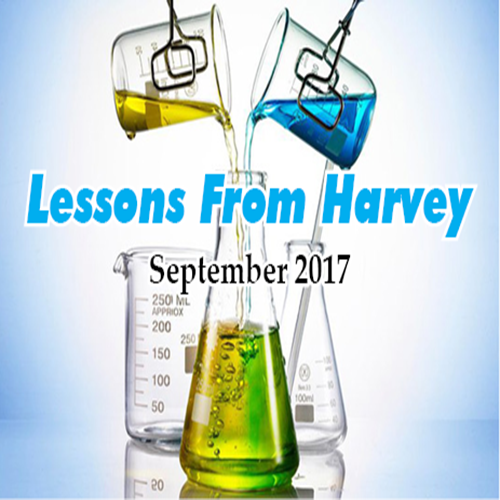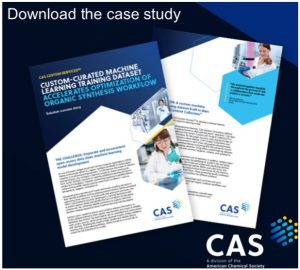Climate patterns are changing all over the world. Severity of rains, droughts, hurricanes and typhoons is becoming far unprecedented than before with its occurrences ominously threatening to hit with regularity, leaving death and destruction in its trail.
When it strikes regions with chemical industry concentrations and when the industry is not geared to face up to it, as happened in Texas when hurricane Harvey stuck, the consequent chemical plant leakages, plant & equipment collapses, fire and explosions, all prove that there is an underestimation of the risk.
With such disasters only set to increase with global warming, Sahasranaman says that it is time to revisit the entire gamut of risk assessment, preparedness and emergency management by the chemical industry.
Hurricane Harvey is on course to join the dubious list of disasters – headed by Bhopal, Flixbourough and Seveso – in the Chemical Industry. Not only did the category 4 hurricane cripple the refining and petrochemical hub of the world in Texas, but it also led to unprecedented spillage and release of toxic and carcinogenic chemicals into the atmosphere. According to a report in New York Times, more than 2000 additional tonnes of chemicals were released from 46 industrial facilities during the week Aug 23- Aug 30. In addition, 14 sites holding toxic wastes were inundated. It is not that Harvey arrived unannounced. It was known for a week and its lethal potential was assessed at least 48 hours before it struck Texas. Yet the chemical plants in arguably the most industrially advanced country of the globe were caught napping and their responses turned out woefully inadequate. How did this happen? A silver lining of every accident is that it mandates us to raise the bar for safe practices. But for Flixbourough we would not be having Hazop; Responsible Care emerged out of Bhopal’s graveyard. So, what do we learn from Harvey? I can quickly think of following three lessons.
Revisiting risk assessment
Hurricanes like Katrina, Harvey and Irma can no longer be considered as “acts of God” or Black Swan events. They are now the new normal and risk matrices need to be reconstructed. Weather experts believe that hurricanes will get more frequent and more powerful as a fallout of global warming. Chemical Industry needs to have plans in place to deal with them. Mathematically speaking, risk is a product of severity and likelihood. Likelihood of monster hurricanes like Harvey and Irma need to be ratcheted up by one or even two levels. This will alter our risk perception completely and will call for new safeguards and disaster management plans.
Hazop is another risk management tool that needs a serious rethink. While a lot of attention gets lavished on the Inside Battery Limit (ISBL) plant during Hazop study, the Outside Battery Limit (OSBL) plant gets a short shrift. It is the OSBL that has the biggest foot print, usually several multiples of the ISBL. Again, it is the OSBL that holds most of the inventory in the plant. OSBL comes across as a poor unglamorous cousin of ISBL during design, engineering, personnel training, operation and maintenance of a process plant. Even in education curricula it hardly gets the importance it deserves. This approach and attitude needs to change.
Plants, especially those on sea coasts, can be asked to redo Hazops considering flooding and power outage as a cause. The worst credible consequence and safeguards for this scenario should be placed in public domain. This will go a long way to improve the trust and confidence of the larger community around the plant.
Revisiting plant inventory
Many chemical plants, especially those built in the last millennium, carry far too much inventory. This excess baggage harks back to the pre-computer and pre-Internet era when supply chain management practices, as we know them today, were not prevalent. Online procurement now has done away with time consuming paperwork and approvals. RFID tracking of shipment has reduced uncertainties. Logistics planning, optimised shipping methods and routes, synergy with suppliers etc helps the industry to prune down the inventory. Inventory reduction not only brings down the operating expenses significantly, but is a giant step towards improving plant safety.
Consider what happened during Harvey. Nearly half a million gallons of gasoline spilled out from just two tanks owned by one of the largest pipeline operators. The exact cause of the leak is still under investigation. The pounding rainfall also reportedly sank floating roofs of at least a dozen large storage tanks leading to leaks. At least two dozen storage tanks holding various refinery materials have collapsed spewing out carcinogenic aromatics – Benzene, Toluene and Xylene. API standards mandate that floating roofs should be designed to withstand a rainfall of 250 mm in 24 hours. Harvey brought more than double that rain. Perhaps on hindsight, we need to redesign and strengthen floating roof tanks for a higher rate of rainfall. It will most certainly add to the cost, but would be a small price to pay for protecting the environment. Increased frequency of inspection, maintenance and structural audit of large storage tanks should also help. Clearly storage tanks bore the brunt of the storm surge. The damage would have been less with reduced inventory.
It must be mentioned here that some refineries were able to increase the levels in their storage tanks during the build-up to Harvey. This made the tanks less buoyant and less vulnerable to floating when the water swamped the tank farm.
Revisiting plant siting
Reasons for siting refineries on the coast are obvious. But they are sitting ducks for hurricanes. And if hurricanes and typhoons are likely to be more frequent we need a radical rethink. New refineries, not that many new ones are likely to be built, should be located inland. Existing refineries should consider erecting multiple barriers to avoid loss of containment.
One of the most horrific accidents in the aftermath of Harvey was the fire and explosion in a peroxides plant. Peroxides are very unstable compounds and need to be stored under refrigeration. When the hurricane knocked out main power supply to the plant, the backup generators failed to start because they were submerged in water. Locating the generators at grade level was clearly a bad idea. But it appears bad only on hindsight. The company had refrigerated trucks to move out the peroxides to a safer inland location. But by the time they decided to act, the roads were overwhelmed with water. The accident could have been totally avoided had the backup generators been located at a height beyond reasonable access of flood waters.
Post Script
Seismic zones are taken into account while designing structures in a chemical plant. Now that hurricanes are expected to become even more frequent than killer earthquakes, we need an improved system and response in place from design techniques to disaster management. Ironically, the response to Harvey was hampered by industries taking shelter under the fig-leaf of an anti-terrorism act, under which they were not obligated to disclose to authorities the nature and quantity of chemicals they stored in their premises.
Readers’ responses may be sent to: k.sahasranaman@gmail.com or chemindigest@gmail.com

































